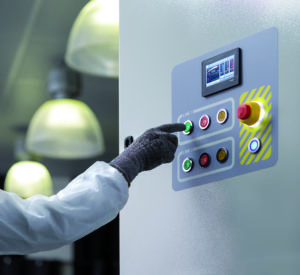Introduction
As we face growing energy demands and increasing pressure to reduce our carbon footprint, it has become clear that traditional energy systems are no longer sufficient. Microgrids are key in addressing this issue. They are localized power grids that can operate independently or with larger power grids. These solutions enable facilities to tap into multiple energy sources and enabling smarter controls, making them indispensable for the energy transition.
But as promising as microgrids may be, they are still relatively new and require expert knowledge to install and maintain. That’s where electrical contractors come in. As the new face of sustainability, electrical contractors have the opportunity to lead the way in connecting microgrids and creating a more sustainable future.
In this blog post, we’ll dive into the basics of microgrids and explore the vital role of electrical contractors in advancing sustainable energy solutions.
What role do electrical contractors play in connecting microgrids?
Electrical contractors are pivotal in developing microgrids, making them integral to the sustainable energy movement. For a successful microgrid implementation, electrical contractors must lead the project lifecycle as they are responsible for ensuring that the energy produced by the microgrid is distributed and integrated into the existing electrical distribution system. An electrical contractor must have expertise in power management, control systems, and innovative grid technologies, all of which are critical for the seamless functioning of microgrids.
As the world moves toward Electricity 4.0 and a more decentralized energy system, microgrids will play an even more significant role.
“Traditionally, microgrid projects have been complex undertakings, demanding extensive engineering and integration of intricate systems such as generators, energy storage, and other DERs,” says Fernando Chavez Pozo, director of Schneider Electric’s Microgrid Partner Program. “These projects were often unique, and only accessible to a select few customers and contractors. However, with the increasing demand for microgrids, the landscape is evolving, giving rise to a new generation of microgrids.”
The new generation of microgrids harnesses the power of standardization and digitalization, significantly reducing the need for extensive engineering and advanced technical skills. Advanced controller programming is no longer required, as the code is automatically generated through user-friendly configurators. This allows contractors to focus on clearly defining customer requirements and seamlessly integrating the project, without the burden of engineering, programming, and troubleshooting. As a result, microgrids have become more affordable, easier to design, and simpler to implement. They are now within reach for many.
At Schneider, we refer to this technology as EcoStruxure Microgrid Flex.
What are the benefits of microgrids?
Microgrids not only power the connected facilities, they can also give power back to communities. Electrical distribution networks can experience interruptions and blackouts because of natural disasters or system failures, but microgrids help provide a localized power source. Additionally, they can incorporate renewable energy sources such as solar or wind power to reduce carbon emissions and decrease dependence on traditional fossil fuels.
Microgrids are an exciting example of how Electricity 4.0 is taking shape and ushering in the next stage of energy industry growth.
How can electrical contractors become leaders in sustainable energy?
With a deep understanding of the latest technologies and a commitment to providing sustainable solutions for their customers, electrical contractors have the potential to aid the transition to decentralized energy systems. They can achieve this by investing in training and education programs to stay current on the latest sustainable energy transition trends. They can also partner with innovative companies to offer innovative solutions to their customers.
By collaborating with clients and integrating these technologies into their operations, contractors can drive sustainability initiatives. Embracing the new technologies not only enhances operational efficiency but also enables contractors to leverage the benefits of the microgrid business. And because of the improved reliability, efficiency, and seamless integration of renewable energy sources microgrids provide, they are gaining more popularity across various sectors, including businesses, hospitals, universities, and communities. That’s why it is critical to choose partners that empower the next generation of contractors.
Getting started can often be the toughest part. So, where to begin?
Electrical contractors can attend training and certification programs on microgrid installation, design, and maintenance. They can also collaborate with technology vendors, consultants, and other stakeholders to learn about the latest trends, technologies, and best practices.
- Step 1: Get the right training. Electrical contractors can attend training programs that provide them with the knowledge and skills to design, install, and maintain microgrids. These programs can cover energy storage systems, energy transition, renewable energy sources, and microgrid control systems.
- Step 2: Utilize the appropriate solutions and offers. Once the electrical contractors have the necessary training, they can start offering microgrid solutions to their customers. They can work with other electrical professionals to design and build microgrids to help their customers save money on energy bills while reducing their carbon footprint.
- Step 3: Electrical contractors can become leaders in sustainable energy by taking on a more proactive role in the electrical distribution system. They can help connect, integrate, and make microgrids a part of existing systems.
By doing so, they can assist in ensuring a more resilient and efficient electrical grid that can better withstand power outages and reduce the risk of widespread blackouts. This will lead to increased energy independence and security for customers and communities.
Ready to increase your own sustainability knowledge and know-how? Learn more with Schneider Electric’s Sustainability School.
In conclusion
Amidst the challenges posed by climate change, microgrids are becoming a crucial component of sustainable energy solutions. Connecting and installing these systems allows electrical contractors to play a key part in the renewable energy transition.
To truly harness the power of microgrids, electrical contractors must also become leaders in sustainable energy. This involves staying current with the latest technology, being familiar with relevant regulations and standards, and educating their clients and communities on the benefits of renewable energy sources.
While this may seem daunting, it is also an exciting opportunity for electrical contractors to play an active role in building a more sustainable future. To gain more insight, visit our dedicated mySchneider Contractor Program website to register today or contact your local Schneider Electric account representative.



